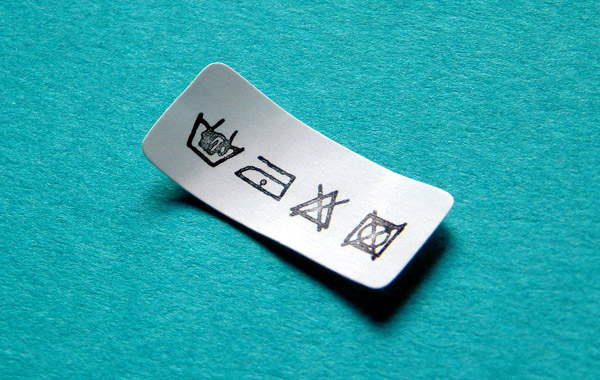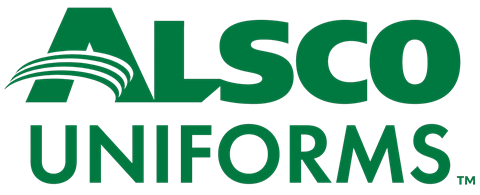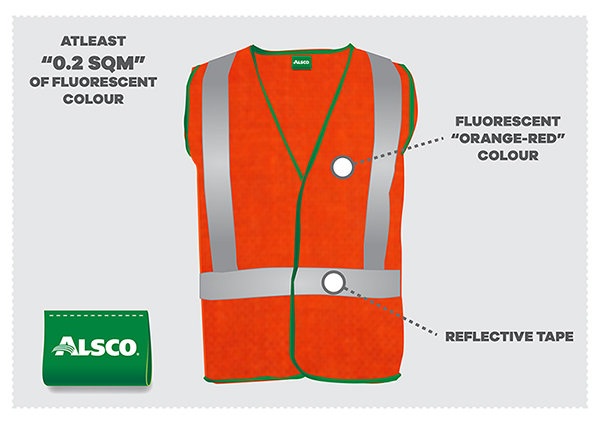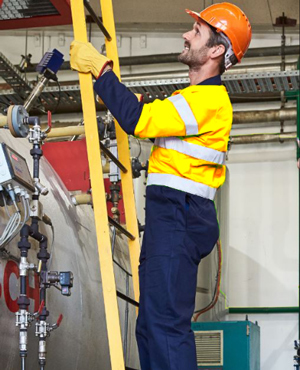Staff are the most important asset in an organisation. The beginning of the year is as good a time as any to kick work safety into high gear.
As a manager, you know the importance of protective workwear.
- It ensures the organisation complies with the legal requirements
- It keeps your staff safe
- It increases work productivity
- It gives staff professionality
- It is a great opportunity to brand your organisation
You have convinced your organisation to buy workwear for its staff. This is a huge investment and it is up to you to ensure you get the most from it.
It is natural to use pricing to judge the value of the workwear. Managers are often under immense pressure. They want to improve work safety but within the budget of the organisation.
But it takes more than price to get the most wear and performance from your workwear.
So what exactly does it take?
The answer to this question, and more, lies within the sections below. Let’s dive in!
1. Buy Workwear for Longevity
Quality is a MUST when considering buying workwear. Select workwear made of high-quality fabric so it serves you for a long time.
Cheap may be very expensive in the long run. The workwear deteriorates fast and is not up to the job. It ends up serving you for only a short period and exposes your staff to risk.
Before long you are back at it again – convincing the organisation to buy new workwear for staff.
You may be wary of the higher initial cost of buying high-quality workwear but think of it as an investment.
You could cut down on the cost. Companies such as Alsco give you a discount if you buy in bulk and they also provide transport. This will save the organisation a few coins.
Don’t compromise by buying cheap workwear made of low-quality fabric. Your workwear is an important part of branding. It reflects the organisation’s image to the public.
Your staff serve as brand ambassadors of the organisation. If they wear high-quality workwear, it gives your organisation a good image. And the vice versa is true.
For your workwear to last longer, it also needs to be functional. It shouldn’t hinder the worker’s productivity.
For example, don’t buy workwear in bulk without factoring in the different sizes of your workers.
If it is too tight, loose or heavy, it won’t serve your company well. Loose or tight clothing is prone to catching and tearing on corners or wearing through quickly as seams are under increased strain. Customise it so it is light, well-fitting and gender-sensitive.
A smart way to go about this is to first make one order of the workwear. Test it to ensure that it is a good fit for your staff and organisation.
Only when you are sure it fits well should you order in bulk.
2. Use the Right Workwear for the Right Job
Every industry demands specific requirements of the workwear. It is important to factor these before buying.
Start by first listing down all the job-related features you need from your workwear. Once you are clear about this, make an order. Emphasise that the workwear needs to have these features.
It should also follow all the applicable safety regulations. For example, in New Zealand, the Hi-Vis AS/NZ 4602 regulates all hi-vis workwear.
There are three classes of workwear depending on the type of risk. Choose the right high-visibility for the job.
-
- Performance Class 1. This is for low risks. Usually, this workwear has the least amount of reflective material. Workers use it in a non-complex work environment. For example, a hi-vis shirt.
- Performance Class 2. This is for medium risks. It includes workwear that has more hi-vis material and designs. This workwear makes the employee stand out in a more complex environment. For example, a sleeveless safety vest.
- Performance Class 3. This is for high risks. It has similar requirements as class 2, but with more hi-vis reflective material. This covers the arms and legs. For example, a hi-vis overall.
3. Follow Wash Care Instructions


Your workwear should uphold the highest standards of cleanliness. Failure to do so compromises on the level of protection it can offer.
For example, when high-visibility clothing is not well cleaned and maintained the dirt on the retro-reflective material can lower visibility.
Washing workwear in the wrong way will damage the item. You want to take care of your workwear so it will serve you for a long time.
All workwear has wash care instructions provided on the labels. The manufacturer places them there for a reason.
Failure to follow the wash care instructions can cause the fabric to shrink or loosen when you wash.
Encourage your staff NOT to wash workwear by hand. Instead, use a washing machine.
Wash workwear only as needed. Don’t keep them dirty for too long. The dirt will stick and become difficult to clean.
Beware that only cleaning workwear every now and then will cause wear and tear. If possible, provide your staff with another set of workwear so they can alternate.
Separate them from other clothes and wash workwear alones. Mixing them with other clothes can cause cross-contamination of germs.
Your personal clothes can also colour bleed on the reflective material. This will reduce visibility of the workwear and put a worker at risk.
Use a normal mild detergent when washing. Avoid softeners and harsh chemicals such as chlorine bleach and oxygen peroxide. These will end up damaging not only your workwear but also the environment.
Once cleaned, tumble-dry your workwear. Avoid drying them under direct sunlight as they risk fading. Also, some fabrics shrink when dried under direct sun.
4. Always Check Workwear for Damage
Take stock of all the workwear that need repair and those that have been lost. Plan to replace those lost and repair the torn ones as soon as possible. Remember, a stitch in time saves nine. Replace those lost immediately.
Encourage your staff to take some personal responsibility for their workwear. It is only right for them to report when the workwear gets lost, needs repair or replaced.
Sometimes, you have no other option than to replace the workwear with a new one. Such situations include:
- If the workwear has exceeded its shelf life.
- If staff have lost their workwear.
- If the tear on the workwear is beyond repair.
- If some staff have soiled their workwear and cleaning no longer restores it.
It is difficult to track all of this on your own. Why not consider commercial services for cleaning your staff’s workwear?
Alsco New Zealand are experts at these services. They have been in business for 125 years.
They guarantee :
- Convenience. Alsco not only sell you the right workwear but also provide you with a workwear rental service. You only deal with one supplier for all your workwear needs.
- Affordability. You get the best price every time. For example, with one annual fee, you get an array of services. They change soiled workwear for fresh, spotless and sanitised ones. It doesn’t matter how demanding your business is, they cater to you.
- Safety. Alsco makes workwear with high-quality fabric. It is also 100 per cent compliant with safety regulations. Giving you peace of mind.
- Customised services. Alsco tailors their services to your needs at no extra cost. With 125 years in business, they have perfected the art.
Save your time and money. Get in touch with Alsco and make your order today. They will help you find the perfect workwear that can serve you for a long time.
Photo: Pressfoto









